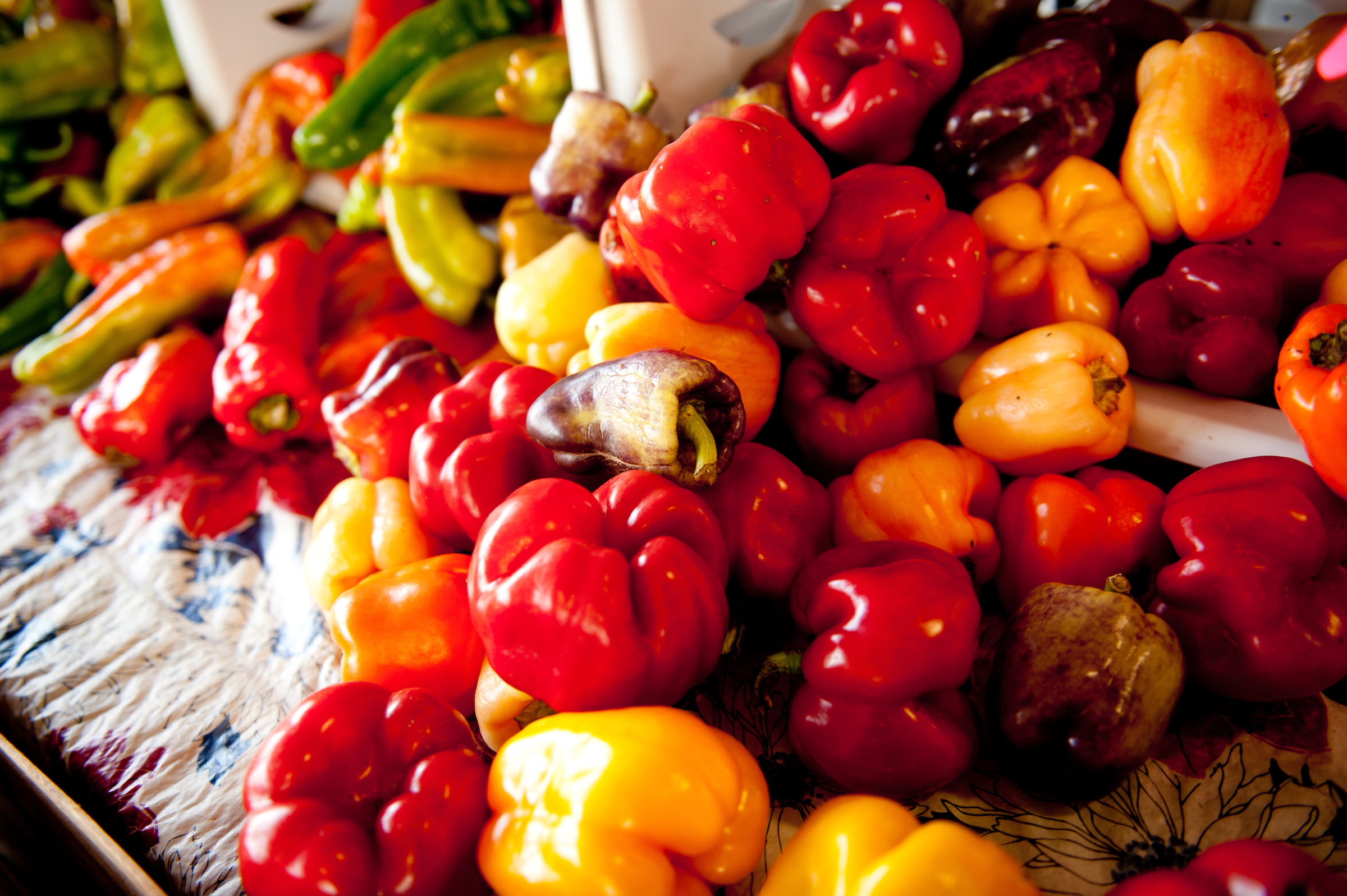So you’ve decided to grow bell peppers in North Carolina, but you’re not quite sure when is the best time to get those seeds in the ground. Well, fret not! In this article, we’ll break down the ideal planting time for bell peppers in NC, helping you maximize your chances of a successful harvest. Whether you’re a seasoned gardener or a green thumb novice, keep reading to discover the perfect window to kickstart your bell pepper growing journey.
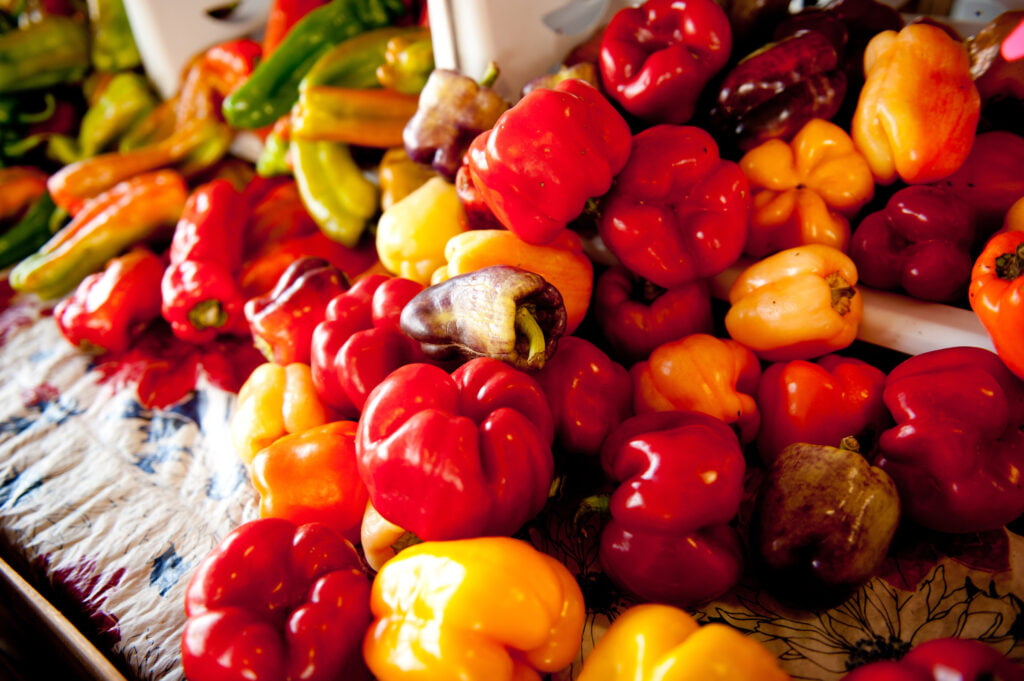
Factors to Consider for Planting Bell Peppers in NC
If you’re looking to grow bell peppers in North Carolina (NC), there are several factors that you should consider to ensure a successful harvest. From climatic considerations to soil requirements and choosing the right variety, each factor plays a crucial role in the growth and productivity of bell peppers. In this comprehensive article, we will explore each of these factors and provide you with the necessary information to make informed decisions for your bell pepper garden.
Climatic Considerations
When it comes to bell pepper cultivation, understanding the climatic conditions in your region is essential. Bell peppers thrive in warm temperatures and require specific conditions to develop properly.
Temperature Requirements
Bell peppers require warm temperatures to grow, with the optimal range being between 70°F and 85°F (21°C – 29°C). It’s important to note that while bell peppers enjoy warm weather, they can become stressed in extreme heat or when temperatures exceed 90°F (32°C).
Frost Susceptibility
Bell peppers are highly susceptible to frost, which can damage or kill the plants. It is essential to consider the average frost dates in North Carolina before planting bell peppers to avoid any potential damage.
Average Frost Dates in NC
In NC, the average last spring frost date varies across different regions. In the eastern parts of the state, the last spring frost typically occurs around mid-April, while in the western mountainous regions, it can extend until mid-May. On the other hand, the first fall frost usually arrives in late September or early October. Keeping track of these dates will help you determine the appropriate timing for planting bell peppers.
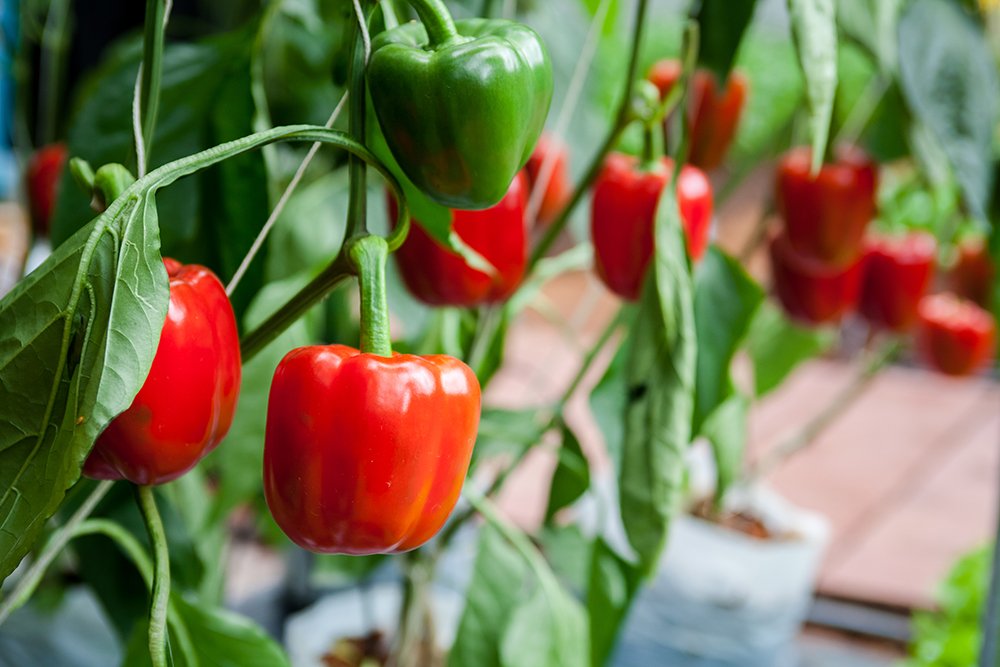
Soil Requirements
The quality of the soil plays a vital role in the growth and development of bell peppers. Understanding the soil requirements and making necessary preparations will ensure that your plants receive the nutrients and drainage they need.
Well-drained Soil
Bell peppers prefer well-drained soil that doesn’t retain excessive moisture. Avoid planting them in clay or compacted soils, as they can hinder root development and lead to waterlogged conditions. Amending the soil with organic matter can help improve drainage and create a more suitable growing environment.
Soil pH
The ideal soil pH for bell peppers falls within the range of 6.0 to 6.8. Conducting a soil test will help determine the pH level of your soil and identify any necessary amendments. If your soil pH is outside the optimal range, you can use appropriate amendments such as lime to adjust it accordingly.
Organic Matter Content
Bell peppers thrive in soil with a moderate to high organic matter content. Adding compost, aged manure, or other organic materials to the soil not only improves its fertility but also enhances its ability to retain moisture. Aim for a soil organic matter content of at least 3% for optimal bell pepper growth.
Testing Soil for Bell Peppers
Before planting bell peppers, it is highly recommended to test your soil for nutrient levels and composition. A comprehensive soil test will provide valuable information about pH, nutrient deficiencies, and recommendations for soil amendments. Contact your local cooperative extension or a reputable soil testing laboratory for assistance in analyzing your soil.
Choosing the Right Variety
Selecting the right variety of bell peppers is crucial to ensure a successful harvest. Factors such as your planting zone, local climate, and personal preferences should all be taken into consideration.
Determining Your Zone
Knowing your USDA hardiness zone is essential when choosing a bell pepper variety. North Carolina encompasses multiple growing zones, ranging from zone 6b in the western mountains to zone 8b in the coastal regions. Consult the USDA Hardiness Zone Map or contact your local cooperative extension for more information about your specific zone.
Determining the Best Variety for NC
When selecting a bell pepper variety for NC, consider the average temperatures, frost dates, and growing season length in your region. Varieties that mature early or have shorter growing seasons are ideal for areas with shorter frost-free periods. Some popular varieties that perform well in NC include ‘California Wonder,’ ‘Big Bertha,’ and ‘Cubanelle.’
Hybrid vs. Heirloom Varieties
Hybrid varieties are the result of cross-breeding different parent plants to create specific characteristics, such as disease resistance or productivity. They tend to be more uniform and may be more resistant to common pests and diseases. Heirloom varieties, on the other hand, are open-pollinated and have been passed down through generations. They often boast unique flavors and characteristics. Consider your preferences and the specific requirements of each variety when making your selection.
Resistant Varieties to Common Pests and Diseases
Some bell pepper varieties are bred to be resistant to common pests and diseases, which can prove advantageous in reducing the risk of crop losses. Look for varieties labeled as resistant to pests like pepper weevils or diseases like bacterial leaf spot or tobacco mosaic virus. Resistant varieties can help minimize the need for chemical interventions and ensure healthier plants.
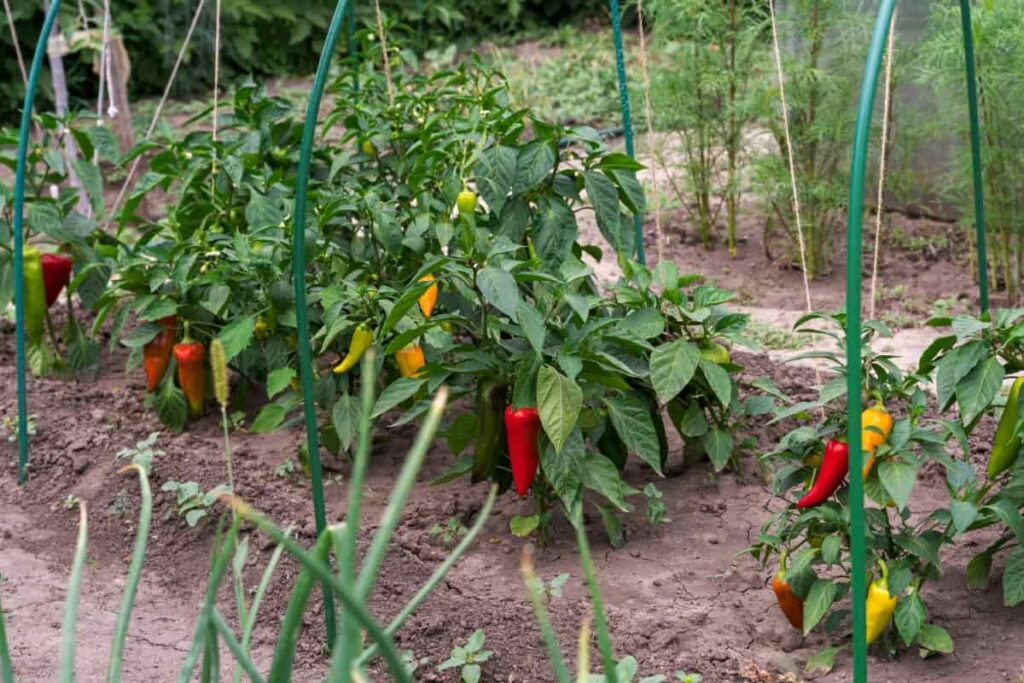
Preparing the Soil
Proper soil preparation is essential for the success of your bell pepper garden. Taking the time to clear the planting area, amend the soil, and improve drainage will create an ideal environment for your peppers to thrive.
Clearing the Planting Area
Start by clearing the planting area of any weeds, rocks, or debris. Remove any grass or weeds by tilling or using a garden fork, making sure to remove the roots to prevent future competition for nutrients and water.
Amending the Soil
Depending on the results of your soil test, you may need to amend the soil to meet the requirements for bell peppers. Adding compost, well-rotted manure, or other organic matter can help improve soil fertility and structure. Mix the amendments thoroughly into the soil, ensuring it’s evenly distributed.
Adding Organic Matter
Incorporating organic matter into the soil not only enriches its nutrient content but also enhances its ability to retain moisture. Spread a layer of compost or well-rotted manure over the planting area and work it into the soil with a garden fork or tiller. Aim for a depth of at least 6 inches to provide the roots with a nutrient-rich environment.
Improving Drainage
If your soil tends to retain excessive moisture or has poor drainage, it’s crucial to improve its drainage capabilities. Raised beds or mounded planting areas can help promote better drainage, especially in heavy clay soils. Alternatively, you can incorporate perlite or coarse sand into the soil to enhance drainage.
Balancing Soil pH
Ensure that your soil’s pH falls within the optimal range of 6.0 to 6.8 by adjusting it with appropriate amendments. If the pH is too low (acidic), you can add lime to raise it. Conversely, if the pH is too high (alkaline), you can lower it by adding sulfur or other acidic amendments. Follow the recommendations from your soil test results for accurate adjustment directions.
Timing According to Frost Dates
Timing is crucial when it comes to planting bell peppers, as they are highly sensitive to frost. Understanding your region’s average frost dates will help you determine the appropriate planting times and maximize your growing season.
Last Spring Frost Date
The last spring frost date determines when it is safe to plant tender crops like bell peppers outdoors. In NC, the last spring frost typically occurs around mid-April in the eastern regions, while it can extend until mid-May in the western mountainous regions. Check with your local cooperative extension, consult gardening resources specific to your area, or track historical weather data to pinpoint the average last spring frost date in your location.
First Fall Frost Date
The first fall frost marks the end of the growing season and indicates when bell peppers need to be harvested or protected. In NC, the first fall frost generally arrives in late September or early October. Keeping track of this date will help you plan when to harvest ripe fruits and take necessary measures to protect your plants from cold temperatures.
Determining Planting Windows
By knowing the average frost dates in your region, you can determine the planting windows for bell peppers. Count back from the last spring frost date to allow enough time for the plants to mature before the first fall frost. Consider the specific variety you’re planting, as some take longer to reach maturity than others. Aim to establish your bell pepper plants in the garden about 2 to 3 weeks after the average last spring frost.
Length of the Growing Season
The length of the growing season plays a vital role in determining which bell pepper varieties are most suitable for your region. Areas with shorter growing seasons can benefit from early-maturing or short-season varieties. Conversely, if you have a longer growing season, you can choose from a broader range of varieties including those with longer maturation times.
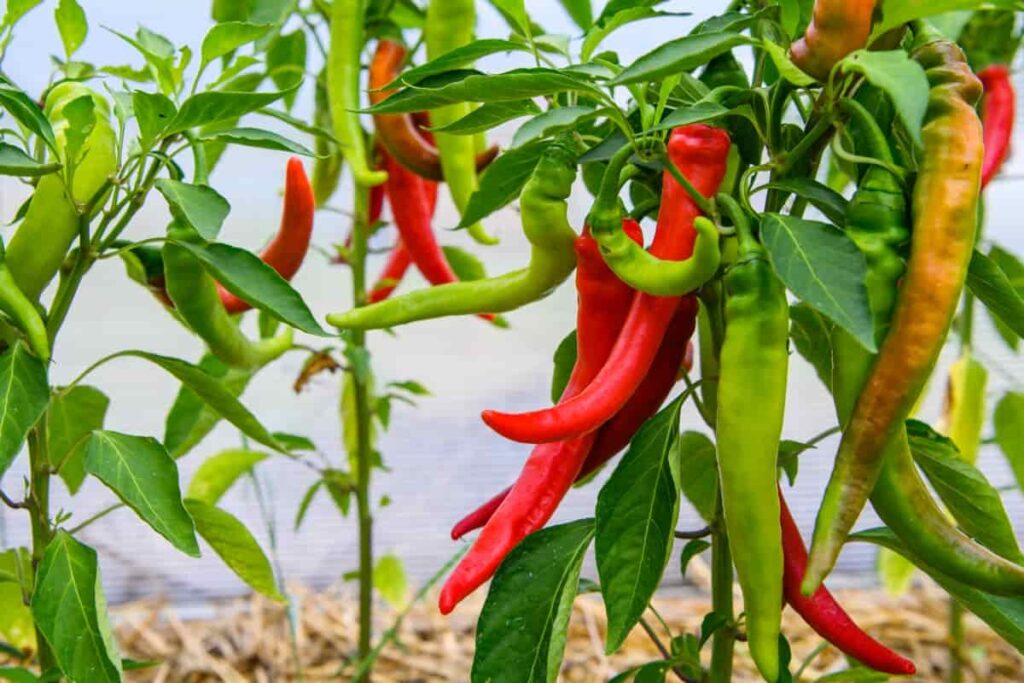
Choosing Transplants or Seeds
When it comes to starting your bell pepper plants, you have the option of using transplants or starting from seeds. Each method has its advantages and disadvantages, and choosing the right approach depends on various factors such as your gardening experience, available resources, and personal preferences.
Advantages and Disadvantages of Transplants
Transplants, or nursery-grown plants, offer several advantages. They provide a head start in the growing season, allowing you to harvest peppers earlier. Transplants also eliminate the need for indoor seed starting and provide a more predictable outcome compared to direct seeding. However, transplants can be more expensive than seeds, and the selection of varieties may be limited.
Advantages and Disadvantages of Seeds
Starting bell peppers from seeds allows for a wider variety selection and more control over the entire growth process. Seeds are generally less expensive than transplants, making them a budget-friendly option. However, seeds require more time, attention, and resources to successfully germinate and grow into strong seedlings.
Quality and Care of Transplants
If you decide to use transplants, ensure that you choose healthy plants from a reputable source. Look for dark green leaves, sturdy stems, and a well-developed root system. Avoid plants with spots, yellowing leaves, or signs of pests or diseases. Take care of transplants by providing adequate water, sunlight, and protection from harsh weather conditions before moving them to the garden.
Selecting High-Quality Seeds
When purchasing seeds for bell peppers, opt for those from a reputable seed company. Look for varieties that are known for their disease resistance, productivity, and suitability to your region. Pay attention to the seed packaging date to ensure freshness, and if possible, choose organic or non-GMO varieties. Proper storage conditions are essential to maintain seed viability, so store them in a cool, dry place until ready for planting.
Seed Starting Indoors
Starting bell pepper seeds indoors allows you to get a head start on the growing season and gives you control over the entire germination and seedling development process. By following a few key steps, you can successfully start your bell pepper seeds indoors.
Determining the Ideal Indoor Sowing Date
For optimal seedling development, determine the ideal indoor sowing date based on the average last spring frost date in your region. Bell pepper seeds typically take 7 to 10 days to germinate, and the recommended seed-to-transplant time is about 8 to 10 weeks. Count back from your average last spring frost date and adjust accordingly based on the specific variety you are growing.
Containers and Seed Starting Mix
Selecting the right containers and seed starting mix is important for successful germination. Use clean seed trays or pots with drainage holes to prevent waterlogging. A high-quality seed starting mix that is sterile and well-draining will provide the optimal growing medium for your bell pepper seeds. Avoid using garden soil, as it can harbor disease-causing organisms.
Providing Adequate Light
Light is crucial for healthy seedling growth. Place your seed trays or pots in a location that receives bright, indirect light or use artificial grow lights if natural sunlight is not sufficient. Position the lights 2 to 3 inches above the seedlings and adjust their height as the plants grow to prevent stretching or legginess.
Optimal Temperature and Humidity Levels
Maintaining the appropriate temperature and humidity levels is vital for successful seed germination and seedling growth. Bell pepper seeds require a warm soil temperature of around 80°F (27°C) for optimal germination. Once the seeds have sprouted, reduce the temperature to around 70°F (21°C) during the day and 60°F (15°C) at night. Aim for a humidity level of 70% to 85% until the seeds germinate, then reduce it to 60% to 70% for healthy seedling growth.
Transplanting Seedlings into Larger Pots
When your bell pepper seedlings have developed their first set of true leaves, it’s time to transplant them into larger pots. Use containers that are at least 3 to 4 inches in diameter and provide adequate drainage. Handle the seedlings gently by their leaves or root ball, being careful not to damage the delicate stems. Plant the seedlings at the same depth as they were in their original containers, and water them thoroughly after transplanting.
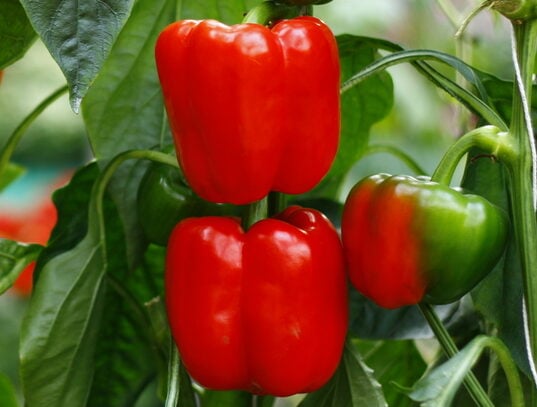
Transplanting Seedlings
Once your bell pepper seedlings have grown strong and sturdy, it’s time to transplant them into the garden. Proper preparation and care during the transplanting process will help ensure their successful establishment and growth.
Preparing the Planting Site
Before transplanting your seedlings, prepare the planting site by clearing any weeds, loosening the soil, and amending it with compost or other organic matter if necessary. Create holes or furrows that are wide and deep enough to accommodate the root ball of each seedling, ensuring proper spacing as recommended for the specific bell pepper variety.
Hardening Off Seedlings
Hardening off is the process of gradually acclimatizing seedlings to outdoor conditions before transplanting them into the garden. Approximately 7 to 10 days before the anticipated transplanting date, start exposing your seedlings to outdoor conditions for a few hours each day, gradually increasing their exposure time. Gradual exposure to sunlight, wind, and fluctuating temperatures will help the plants adapt and reduce transplant shock.
Transplanting Techniques and Depth
When transplanting your bell pepper seedlings, handle them gently by their root ball to avoid damage to the stems or leaves. Place each seedling in the prepared hole or furrow, making sure it is at the same soil depth as it was in its container. Firmly but gently press the soil around the seedling to eliminate any air pockets and ensure good soil-to-root contact.
Watering and Mulching Transplants
After transplanting, water the seedlings thoroughly to settle the soil around the roots and provide adequate moisture. Ensure a consistent supply of moisture by watering deeply whenever the top inch of soil feels dry. Applying a layer of organic mulch, such as straw or shredded leaves, around the base of the plants will help conserve moisture, suppress weeds, and regulate soil temperature.
Extending the Growing Season
If you wish to extend the growing season for your bell peppers in NC, there are several techniques and tools available to protect your plants from cold temperatures and frost damage.
Using Protective Covers or Row Covers
Protective covers, such as garden fabric or row covers, can provide a physical barrier against chillier temperatures and frost. Place the covers over your bell pepper plants during cold nights and remove them during the day to allow for sunlight and air circulation. Ensure that the covers are securely anchored to prevent damage from wind.
Cold Frame Gardening
A cold frame is a simple season-extension structure that uses a transparent lid to trap heat and protect plants from cold temperatures. By constructing a cold frame and placing it over your bell pepper plants, you can create a microclimate that enables them to continue growing even as temperatures drop. Open the lid during the day to regulate temperature and provide ventilation.
Greenhouse Gardening
If you have access to a greenhouse, you have the advantage of being able to control the growing environment more precisely. By planting your bell peppers in pots or containers within the greenhouse, you can effectively extend the growing season and protect the plants from frost. Ensure proper ventilation and monitor temperature and humidity levels to create an optimal growing environment.
Season Extension Techniques
Other season extension techniques include using heat-absorbing containers such as black nursery pots, utilizing wall-of-water plant protectors, or utilizing heat sources such as heating cables or mats to keep the root zone warm. These techniques can help create favorable growing conditions and guard against cold snaps, allowing your bell pepper plants to thrive well beyond the normal growing season.
In conclusion, successfully planting bell peppers in North Carolina requires careful consideration of various factors. Understanding the climatic conditions, soil requirements, choosing the right variety, and proper timing are all critical for a fruitful harvest. Preparing the soil adequately, selecting transplants or seeds, and giving proper care during seed starting and transplanting are also key to ensuring healthy plants. By employing season extension techniques, you can even extend the growing season and continue to enjoy fresh bell peppers well into the fall. With this comprehensive guide, you are now equipped to take on the challenge of growing your own bell peppers in NC and reap the rewards of homegrown goodness.
